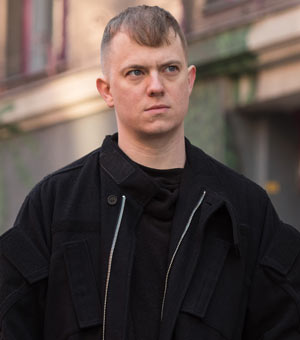The Captured Rituals of Iwajla Klinke
by Travis Jeppesen on August 2, 2013

One of the more pernicious symptoms of global capitalism has been the spread of an overwhelming uniformity of style and appearance that goes under the name of “popular culture.” Like the global spread of English as a lingua franca, it is meant to serve as a universal language – one whose symbols we must all comprehend if we are to live in the world today, whether we like it or not. The annihilating effects of this phenomenon on local cultures and forms of expression are well known, and indeed, any counter-globalization effort worth its name must take into consideration some measures of preservation.
It is with great timeliness – despite the inherent timelessness of her images – that an artist like Iwajla Klinke then arrives on the scene, fully armed to give us a glimpse at various micro-worlds that continue to endure against the grain of contemporaneity. At the same time, Klinke’s photographs are global in their outreach – she does not confine herself to one particular culture or region, but has set out upon a journey to preserve glimpses of fast-disappearing collectivities that connect us to ancient traditions of myth and ritual, rites that continue to resonate in our day-to-day lives, whether or not we pause to consider their reverberations.
Klinke utilizes classical portraiture to capture her subjects in either traditional costumes, or else manufactured creations that somehow preserve some semblance of ancient ritual. Not far from her home in Berlin, the Sorbians of Eastern Germany still celebrate the annual Bird Wedding on 25 January of each year, in which two children are selected as bride and groom and brought together in a mock ceremony to celebrate the upcoming end of winter. Klinke captures her child brides against dark backgrounds and in natural light, allowing us to admire both the fine detail and flourish of their traditional dresses as well as the determined expressions of reverence that are somewhat surprising to find on children’s faces; they bespeak a worldliness that goes beyond our traditionally cosmopolitan conception of the term, a worldliness that is definitively earthbound and engraved in the machinations of a past that is eternally present.
In another series, Klinke travels to Sicily during Holy Week to select decorated subjects from the festive pageantry for her portraits. Here, the Mysteries have been played out in the days before Easter ever since the 1600s in processions that can last up to twenty-four hours. With baroque extravagance, the children take on their apostolic roles with dignity and honor – and yet the disparity that emerges between their exaggeratedly colorful and detailed robes and sacred cloths and the pitch black background they are shot against is like the very chasm between the Earth, with its millennia of history, and the perpetual darkness from whence it all emerged – and to which it might someday return.

The question, then, must be asked: What distinguishes these photographic works from a mere exercise in cultural anthropology? Despite the seeming esoteric subject matter, Klinke’s gaze is never clinical or desultory; rather, she holds her subjects in the same reverence and esteem with which they carry out their annual rituals. One could say that photography is Iwajla Klinke’s own ritual, one whose results she generously shares. Even her method is quasi-ritualistic. In her travels, Klinke produces her photographs using the same method she practices in her home studio in Berlin’s fashionably shabby Kreuzberg district. Eschewing unnatural light, her photo shoots always take place during the day time next to a window. Given the relative poverty of sunshine in Germany throughout most of the year, the light is usually soft, dim, and pale, as though to allow her subjects’ “inner glow” to fill the frame. Deceptively simple and straightforward in appearance, the photographs are actually produced in sessions that can last up to several hours, during which hundreds of shots are taken, from which the artist will select one single image to serve as the finished portrait. Her subjects, then, must enter into something like a meditative state and wholly submit to the process as the work is being done, which perhaps accounts for the sense of serenity that emerges from nearly all of the figures in Klinke’s photographs.
It is no mistake that Klinke prefers photographing children. One cannot conjure a future worth living in without a cognizance of the past that entails at least some engagement beyond the superficial. Iwajla Klinke’s practice, after all, also extends beyond contemporary photography’s limited concerns and is perhaps best seen situated among the paintings of the Old Masters that continue to inspire her, with the chiaroscuro endeavors of Jean Barbault and Caravaggio immediately springing to mind. Excavating some of the most unlikely sources of our contemporary fabric and forcing us to turn our gaze upon them in an intense consideration, Iwajla Klinke effectively re-invents the sublime and gives us a new politics of reality.



One comment
[…] The Captured Rituals of Iwajla Klinke […]
by The Captured Rituals of Iwajla Klinke – Iwajla Klinke on December 14, 2016 at 2:41 pm. #